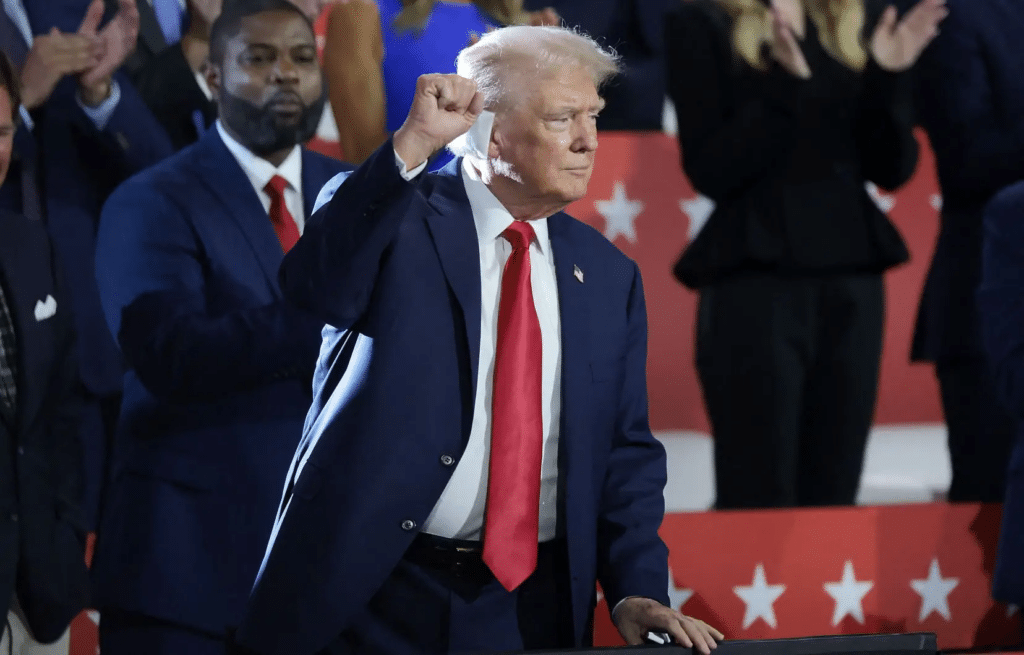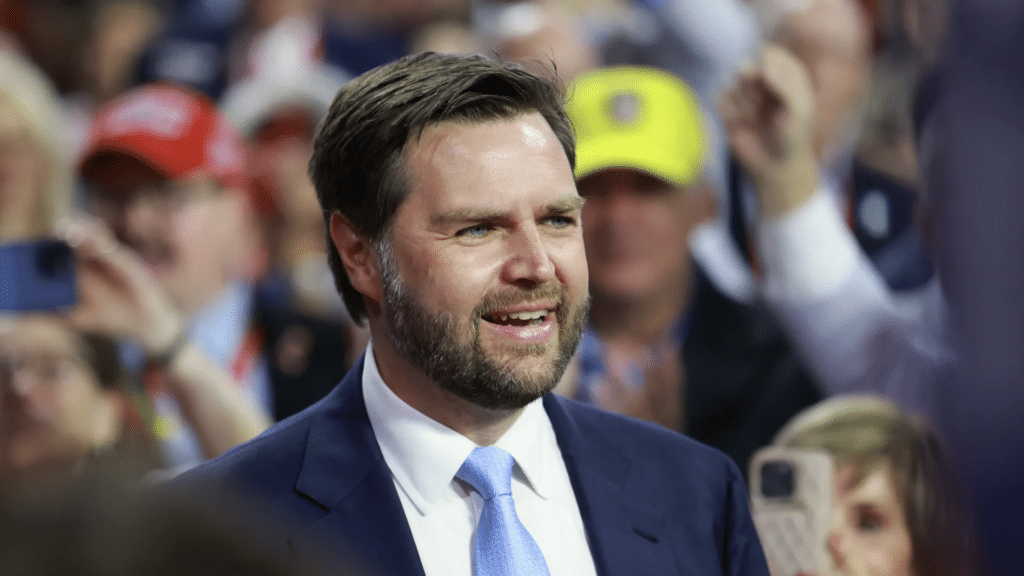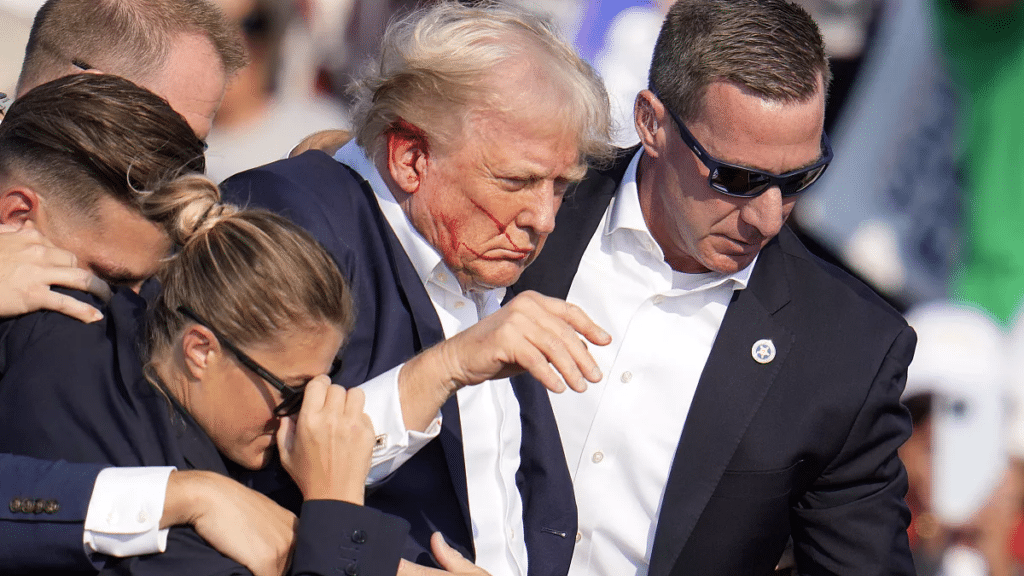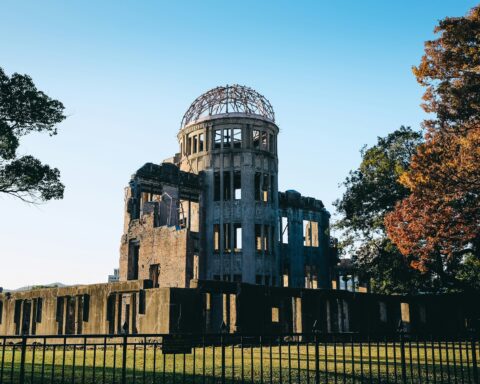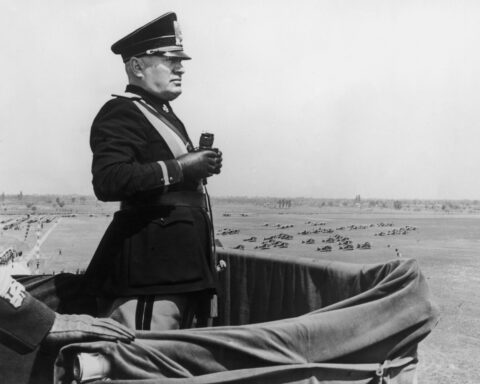After escaping an assassination attempt, Donald Trump made a remarkable comeback at the Republican convention. With a bandage around his ear and a raised fist, he presented himself as a unifying leader, transformed by his ordeal. Will his upcoming speech, focused on national unity, mark a turning point in his presidential campaign?
Donald Trump made a notable public appearance on Monday, July 15, on the opening night of the Republican convention in Milwaukee, sporting a bandage on his right ear and a raised fist. The event marked his comeback after an assassination attempt on Saturday July 13 in Pennsylvania.
Singer Lee Greenwood sang “God Bless the USA” to accompany his entrance, a staple anthem at Trump rallies, to a jubilant crowd.
The former president’s public appearance was particularly powerful after the traumatic events in Pennsylvania the day before. At a campaign rally in the town of Butler, gunfire rang out at 6:08pm local time, interrupting Trump as he denounced illegal immigration. “Look what just happened…” he began, before being interrupted by a burst of gunfire.
Wounded in the right ear, he was quickly evacuated by the Secret Service. “I knew right away something was wrong because I heard a whistle, gunshots, and I immediately felt the bullet tear the skin,” he said later on his Truth Social network.
The gunman, identified by the FBI as Thomas Matthew Crooks, 20, of Bethel Park, Pennsylvania, was shot dead by the Secret Service after firing several shots from an elevated position. The attack left one participant dead and two seriously injured.
Federative response
Despite this attack, Trump has maintained his participation in the Republican convention. By Sunday, he was in Milwaukee to dine with Republican donors. On Monday, delegates officially nominated him as the 2024 presidential candidate. He will officially accept the nomination on Thursday evening, with a speech he has revised to make it more unifying.
He chose to nominate Senator J.D. Vance as his running mate, a surprising choice announced earlier than expected due to events. According to Trump, Vance will continue to “fight for our Constitution, stand by our troops and do everything I can to help make America great again”.
The choice of J.D. Vance, a senator with an aggressive style, seems at odds with the image of peacemaking leader that Trump has been trying to adopt since the attack. Vance was quick to accuse Joe Biden’s “rhetoric” of having “directly led to the assassination attempt on President Trump”.
However, Vance’s ties to wealthy Silicon Valley donors and his ideological alignment with Trump probably weighed in.
Democratic reactions were swift. Joe Biden criticized Vance, calling him a “Trump clone” and accusing him of wanting to raise taxes for middle-class households while favoring the rich.
“Vance will do what Mike Pence refused to do on January 6: bend over backwards for Trump and his extreme MAGA agenda, even if it means breaking the law and regardless of the harm done to the American people,” said Joe Biden’s campaign team.
Vice President Kamala Harris has already agreed to debate Vance.
A turning point for Trump
In an interview aboard his private plane en route to Milwaukee, Trump called the incident “surreal”. “The doctor at the hospital said he’d never seen anything like it, that it was a miracle,” he said. “I’m not supposed to be here, I’m supposed to be dead”.
This ordeal seems to have prompted him to modify his nomination speech, initially intended to be very tough, into a call for national unity. Since Saturday evening, Donald Trump has adopted the image of a unifying leader, seeking in his press releases to tone down the aggression and outrageousness usually attributed to him. Those close to him claim that his experience of escaping death has transformed him.
Trump expressed his gratitude to the Secret Service for their efficiency and praised the crowd for its calmness during the incident. He also mentioned his intention to pay tribute to the victims of the attack, including Corey Comperatore, the firefighter killed while protecting civilians.
His speech on Thursday will be closely scrutinized to see how he plans to navigate this polarized political landscape.
Conspiracy theory
Meanwhile, two days after the assassination attempt on Donald Trump, conspiracy theories are pouring in on the X social network. Different camps are clashing, including the pro-Trump side, convinced that Joe Biden was the instigator of the attack. “Joe Biden told donors it was time to put Trump in the bull’s-eye and that’s exactly what happened,” wrote Republican Representative Marjorie Taylor Greene on X.
Another hypothesis put forward by many Internet users is that Donald Trump himself was behind the attack. American actress Amanda Seales claimed the whole thing had been staged, referring to “fake blood pellets”. Finally, a third theory suggests that the “Deep State” is behind the attack. This belief, widespread in the USA, claims that the world is run by a secret parallel state.
As the campaign continues, the impact of this assassination attempt on public opinion remains to be seen. Trump seems determined to use this experience to position himself as a unifying leader, although deep divisions within the American electorate pose a significant challenge.
The assassination attempt on Donald Trump not only disrupted the timetable of the Republican convention, but also influenced the dynamics of his presidential campaign. It remains to be seen whether this tragedy will become a positive turning point for Trump, or whether it will further accentuate the fractures within the American electorate.
Read also>The race for the White House has begun, but who will emerge victorious?
Featured photo : © Evan Vucci/AP/SIPA









